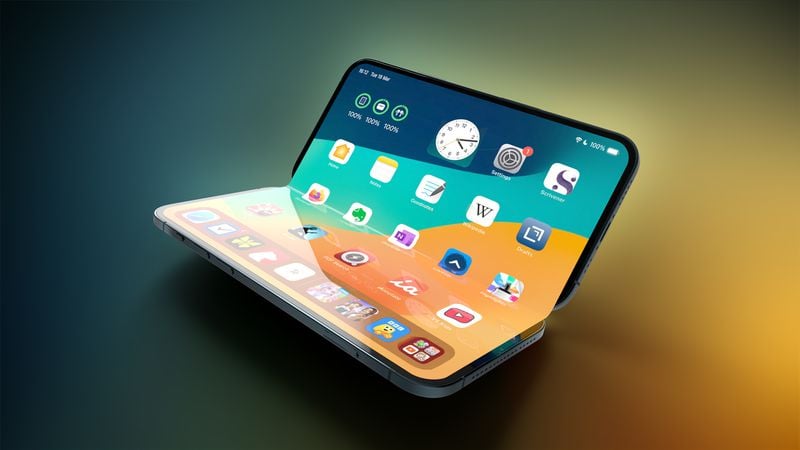After years of speculation and rumors, Apple’s first foldable iPhone may finally be on the horizon. While exact details remain scarce, numerous reports from credible sources have shed light on key aspects of the device, with 2026 increasingly looking like the year it will make its debut. Below is a roundup of the most reliable leaks and rumors surrounding Apple’s foldable iPhone.

Design: Book-Style Folding Mechanism
According to Bloomberg’s Mark Gurman, Apple’s foldable iPhone will adopt a book-style folding mechanism, similar to the Samsung Galaxy Z Fold, rather than the clamshell design seen in the Samsung Galaxy Z Flip. This style will offer a larger screen when unfolded, likely making it more similar to an iPad mini.
Industry analyst Ming-Chi Kuo expects the foldable iPhone to have the following dimensions:
- 9 to 9.5 mm when folded
- 4.5 to 4.8 mm when unfolded
This puts the device in line with the size and proportions of other foldables currently on the market.
Display: Dual Screens with a Large Inner Display
The foldable iPhone will feature two screens:
- A 5.5-inch outer display when folded, offering a typical iPhone experience.
- A 7.8-inch inner display when unfolded, designed to provide a tablet-like experience.
Reputable sources confirm that the inner display will be virtually crease-free, which is an important factor in addressing one of the key issues of foldable screens—creased lines after frequent folding.
Chassis and Hinge: Durability at the Forefront
The foldable iPhone is expected to use a titanium chassis, a premium material often associated with durability and strength. The hinge, a crucial part of any foldable phone, is reportedly made from a combination of titanium and stainless steel. To further improve durability and prevent screen creasing, Apple is said to be using liquid metal in the hinge. This material, which is manufactured through a die-casting process, will help improve the lifespan of the device and make it more resilient to wear and tear.
Cameras: Dual Rear Setup and Front-Facing Camera
In terms of cameras, the foldable iPhone is expected to feature a dual-lens rear camera system, along with a front-facing camera that works whether the phone is folded or unfolded. This setup is likely to offer flexibility in terms of both design and camera quality, ensuring users get a good experience regardless of how the device is being used.
Authentication: Touch ID on the Side Button
Rather than relying on Face ID, Apple is expected to use Touch ID as the primary method of authentication. According to Kuo, this decision is likely due to the limited internal space available inside a foldable device. The Touch ID side button will likely resemble what’s seen on Apple’s iPad, including the iPad Air and iPad mini, offering a more space-efficient solution while retaining a secure and user-friendly method for unlocking the device.
Battery: High-Density Cells for Better Efficiency
Apple is focusing on improving battery efficiency in the foldable iPhone by slimming down key components, like the display driver, to make room for more battery cells. Leaks suggest the device will use high-density battery cells, a technology Kuo also believes will be featured in the upcoming iPhone 17 Air. This could help maximize battery life in a compact and efficient form factor, which is crucial for foldable phones with larger displays.
Pricing: Premium Price Range
The foldable iPhone is expected to come with a premium price tag, with estimates suggesting it could cost between $2,000 and $2,500 in the U.S. This would make it one of the most expensive iPhones ever released. Despite the steep cost, Apple’s loyal fanbase is expected to be drawn to the device, especially if it meets their expectations in terms of quality, design, and performance.
Launch: Targeting Late 2026
While there’s no exact release date yet, sources indicate that the foldable iPhone is in the New Product Introduction (NPI) phase at Foxconn, Apple’s manufacturing partner. Both Kuo and Jeff Pu predict that mass production will start in the second half of 2026, with a potential launch expected later that year.